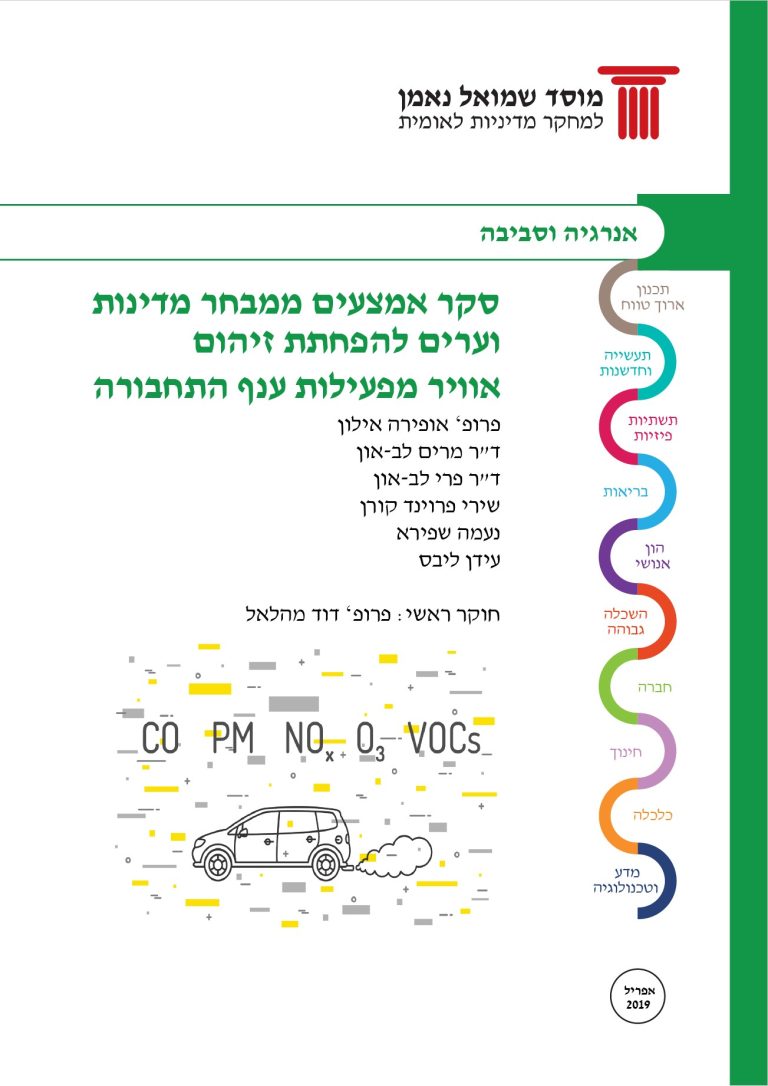Management of air pollution from transportation refers to the dynamic process a regulatory authority undertakes to reduce, prevent/eliminate air pollution emissions and their harmful effects on human health and the environment. The process of managing air quality, including from the transportation sector sources, consists of a cycle of inter-related activities, including periodic assessments and reviews of needed improvements.
Air pollution is caused by many sources including from industry, commercial, residential and a myriad of transportation modes. Air pollution emitted from transportation contributes to smog and to poor air quality, which has negative impacts on the health and welfare of the exposed population. The impacts stem from emissions of a variety of what is known as local air pollutants (particulate matter, oxides of nitrogen and sulfur, carbon monoxide, metals and volatile organic compounds) and those known as global pollutants that contribute to climate change (carbon dioxide, methane and other greenhouse gases). Among the pollutants emitted are compounds that are known or suspected to cause cancer or other serious health and environmental effects.
The air pollution caused by the transportation sector is comprised of the atmospheric emissions from all vehicles (passenger cars, light duty and heavy-duty trucks, buses, and more). The impact of these emissions from the transportation sector is especially pronounced in dense urban environments. Transportation emissions which are the subject of the current study constitute 40% of nitrogen oxides, 11% of fine particulates (< 2.5 µm) and 9% of non-methane volatile organic compounds (NMVOC).
An integrated and structured air quality management approach is needed to establish and attain air quality objectives at the national and local levels. It goes beyond the clean fuels and vehicles strategy and requires appropriate information about best practices and policy measures that would lead to the attainment of pollution reduction goals.
In the past decade there has been stepped up global activity to advance regulatory programs to reduce air pollution from transportation with heightened emphasis on moving towards decarbonization of the transportation fleet. Clearly, the magnitude of the air quality problem and the contribution of the transportation sector to overall emissions will determine the extent of motor vehicle emissions control requirements. The biggest component of a vehicle emission control strategy in any air quality management plan must be improved vehicle technology, which can be enabled, or assisted, by changes to fuel quality. Additionally, a strategy should incorporate improved intermodal transportation to enhance mobility and address the expected increase in passenger-km travelled.
Cleaner vehicles will emit lower quantities of air pollutants per km travelled, yet, their benefits may sometimes be limited due to the rate of turnover of the entire vehicle fleet. One has also to consider the rebound effects which refer to the increased km traveled caused by increased fuel efficiency, cheaper fuels, or roadway expansion that increases traffic speeds. In a typical situation, about a third of the fuel or the time saved are used for additional vehicle travel.
In addition to clean fuel and added vehicle options the global programs advocate different mobility management strategies:
- Strategies that improve transport options (like walking, cycling, public transit, car-sharing, etc.) tend to provide direct user benefits.
- Pricing reforms (like distance-based insurance and parking cash out) provide direct user savings (they are optional so users only reduce vehicle travel if they directly benefit), while others (such as higher road tolls, parking fees and higher fuel prices) increase user costs but are economic transfers so their overall impacts depend on how revenues are used.
- Smart growth policies, which result in more compact and multi-modal development tend to provide both direct user benefits (improving accessibility and reducing transport costs) and some user costs (increased local congestion and some development costs).
When formulating policy measures, one must consider all possible impacts to try and avoid unintended consequences. The principles that govern the considerations of best policies are those that can help identify win–win emission reduction strategies that provide multiple benefits and opportunities for cooperation among interest groups.
For this study we have elected to adopt the classification of policies according to the Avoid, Shift and Improve framework. From the policies reviewed we selected close to 20 measures from countries and cities around the world for inclusion in this survey. The selected policies were subdivided as those formulated to avoid air pollution, shift passenger and goods transport to lower emission modes, and introduce technological improvements to increase energy efficiency and minimize vehicles’ emissions. For each of the strategy measures we described how it was implemented, in one or more jurisdictions and their implementation strategy along with the policy’s strength and weakness.
Transport is the backbone of the economy, an enabler of growth and jobs, essential for the functioning of the market and the free movement of goods and people. Market integration, economic growth and transport activity are strongly related. The global transition towards a low-carbon economy has started, supported by the Paris Climate Agreement, however, currently transport still relies on oil for 94% of its energy needs. Making transportation more sustainable will require different transitions in terms of technology, urban planning and societal behavior. Avoiding the use of transportation where possible; shifting toward more environmentally friendly modes of transport and improving the efficiency of all modes of transport can not only be cost-effective but can also offer environmental co-benefits and reduce the environmental impact of transport.
In general, mobility management strategies could achieve improved outcomes when compared to cleaner vehicle strategies, particularly if we account for rebound effects. Of the various types of mobility management strategies, improving transport options tend to provide the greatest range of benefits because they directly benefit users. Pricing reforms are primarily economic transfers; their ultimate impacts depend on the quality of accessibility options available and how revenues are used. Smart growth policies tend to provide a mix of benefits and costs.
The principle recommendations stemming from this study call for an integrated effort to take immediate actions such as banning the import of high emission cars (for example, private cars fueled by diesel); changing vehicle taxation to make car ownership more expensive to encourage a shift to other transportation modes; amending the planning process to ensure proper transportation planning for all municipalities; and incentivizing innovation in the areas of navigation, vehicle control and accident avoidance.
Key tenets for accomplishing reduction of Air Pollution from transportation
- Formulation of a broad strategy to reduce emissions from transport based on reducing the vehicle miles travelled along with emissions per mile, while increasing the proportion of trips on public transportation. Use increased taxation on polluting vehicles and low emission zones restriction in city centers to incentivize switching to electric vehicles.
- Allocation of resources and setting priorities to promote various measures to reduce air pollution from transport
- Change of transport taxation system (vehicles and fuels). Update taxation of fuels and private vehicles in order to reduce dependence on private cars.
- Promotion of planning and regulatory measures to reduce travel by private cars while focusing on reducing congestion in urban streets and intercity roads.
- Promote increasing the proportion of travel by public transportation and other modes, such as trains, buses, bike riding and walking.
- Improving and streamlining the freight forwarding system, while paying special attention to the issue of goods distribution in cities (The last mile).
- Use of regulatory and economic measures to encourage the installation of technologies to reduce emissions of vehicles in existing fleets with special emphasis on using clean fuels,
- Expand the designation of reduced or low emissions zones,
- Development and implementation of innovation in the field of smart transportation, and smart cities,
- Making optimal use of existing infrastructure while applying advanced traffic management methods
- Involving all the stakeholders into the process. Including, the national and the local government administrations, non-governmental organizations, business companies and the academia. All this, in order to raise awareness, work with partners to be part of the process and promote implementation.
In order to implement these principles, it is necessary to track and monitor the effect of policy measures on improving air quality due to conflicting trends (increase in kilometers traveled with technological improvement of vehicles). Reliable tools should be developed to monitor improvement in air quality.












